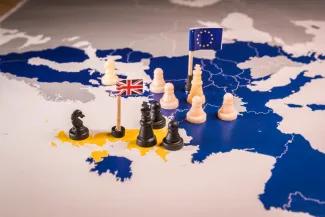It is December 2020. Less than 27 days until Brexit. There is still no deal and the European Union and the United Kingdom keep extending the deadline. At least this means that there is still a deal in sight.
There currently seem to be 3 options on the table for January 1st, when the transition period ends and Brexit will be final.
The Swiss Model
The relationship between Switzerland and the European Union is littered with bilateral agreements. It is relatively complicated in terms of governance. Also, it took a long time for the European Union and Switzerland to negotiate the current agreement, and it constantly needs to be revised.
Switzerland is not a member of the European Union. It is a member of Schengen, but still controls its own borders. Switzerland is also a member of the European Free Trade Association, but it is not a member of the European Economic Area. Still, when there is a dispute between Switzerland and the European Union, it is settled at the EEA Court.
From a customs point of view, it would mean that importers and exporters would need to use a EUR.1 certificate when importing from or exporting to the United Kingdom and vice versa. With this Eur Certificate importduties can be eliminated.
If you want to read more about the Swiss Model, and its potential to function as a solution to Brexit, see this article.
The Canadian Model
Canada and the European Union have a trade agreement in place called CETA, the Comprehensive Economic and Trade Agreement. Under the terms of CETA most import tariffs on both the European Union and the Canadian side have been eliminated.
It also covers an agreement on standards, so products that have gone through quality and safety checks in the European Union don’t have to go through the same checks in Canada.
Key in the Canada model is a declaration which is (mostly) mentioned on the invoice, similar to a REX declaration. Such a declaration states, amongst other things, the origin of the goods. Please note that these declaration may only be made by registered exporters, which have a permit to do this. The format for such an origin declaration can be found here.
If you want to read more about the Canadian Model, and its potential to function as a solution to Brexit, see this article.
A No-Deal Brexit
This is the scenario businesses should not want. It is the scenario with a maximum of documents, import duties, border checks, delays and the potential for huge traffic jams on both sides of the North Sea, with goods piling up on both sides of the border.
What Can Companies Do to Prepare?
For companies that already export to or import from third countries, the new procedures after Brexit will probably more of the same. However, as it is still uncertain what the outcome of the negotiations will be, companies need to prepare for several scenarios. We advise all companies to share your data with your customs partner, as they can help you with a Brexit Impact Analysis.
If you have any questions check out our Frequently Asked Questions (FAQ) on our Brexit page, or contact one of our specialists.













